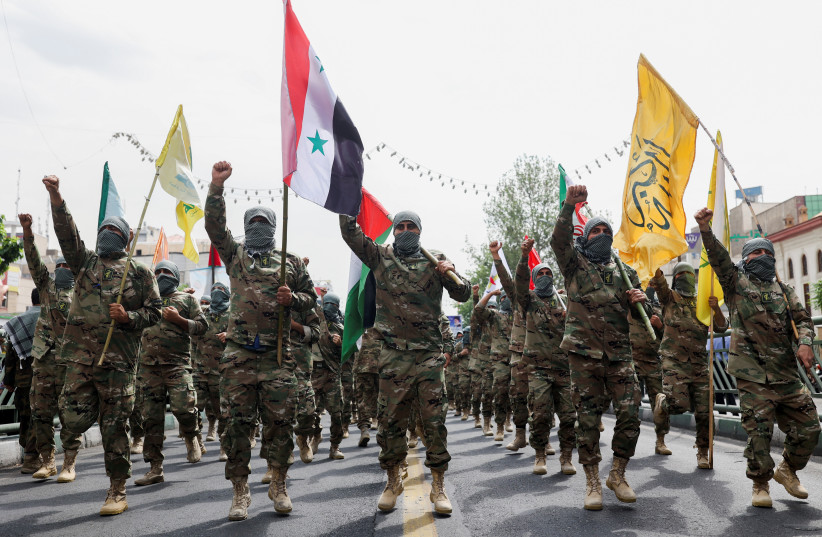A ‘dead’ IRGC commander, and the Middle East media problem – analysis
In the early hours of Sunday, reports emerged about the alleged killing of an Iranian officer from the Islamic Revolutionary Guard Corps in Syria. However, it turned out that the man who was “killed” does not exist and that he was named after a type of baked goods, the equivalent of “Commander Cup Cake.” The false report was apparently generated to confuse readers and spread false news, or at least to spread confusion.
Iran International in Arabic for instance says “Hours after the announcement of the killing of Hussein Suhani…as a result of an Israeli attack on the Syrian city of Homs, media outlets close to the Revolutionary Guards reported that the news was published by an Iraqi website on the Internet, and there was no person named Hussein Suhani.”
The decision to spread this deliberately false news was apparently done by an Iraqi website and Telegraph channel named Sabareen News. This channel is generally seen as pro-Iran and linked to Iranian-backed militias in Iraq. The “news” of the killing spread quickly and ensnared many local Arabic language media.
The point now seems to have been to purposely dupe many media in the region and then mock them. BBC journalist Nafiseh Kohnavard noted the discrepancy on Twitter.
“Unbelievable…A telegram channel linked to Iraqi Shia paramilitaries deliberately posted fake news regarding ‘the killing of Hossein Sohani an IRGC commander in Israel’s attack on Homs, Syria last night’ to just mock the media and amazingly most Arabic channels swallowed it and published…Hossein Sohani is a well-known brand for Sohan a traditional Persian saffron brittle made in the city of Qom!”
 Members of special IRGC forces attend a rally marking the annual Quds Day, or Jerusalem Day, on the last Friday of the holy month of Ramadan in Tehran, Iran, April 29, 2022. (credit: MAJID ASGARIPOUR/WANA (WEST ASIA NEWS AGENCY) VIA REUTERS)
Members of special IRGC forces attend a rally marking the annual Quds Day, or Jerusalem Day, on the last Friday of the holy month of Ramadan in Tehran, Iran, April 29, 2022. (credit: MAJID ASGARIPOUR/WANA (WEST ASIA NEWS AGENCY) VIA REUTERS)Sabereen News appears to making light of how this information flowed around the region and has then mocked those who shared it.
However, they were the source of the misinformation, noting in the early hours of Sunday, “the martyrdom of the Iranian Revolutionary Guards general, Colonel Hussein Suhani, in the Israeli bombing tonight on Homs; The latter is considered a drone specialist.” Later they posted an image of an Iranian uniform with a large pastry in the place where a head should be, mocking those who believed there was really a man by this name.
This would be the equivalent of a small US media outlet claiming that General Cocoa Pebbles was killed in an airstrike or Col. Krispy Kreme, a name obviously recognized as fictitious by native speakers, but one that apparently some foreign media might pick up. If the name was sufficiently capable of being both a name and a snack, such as Major Clark Bar, perhaps it would be understandable if someone confused the two.
What was the reason?
The only question that remains is what was the point of fooling regional media for a few hours. Who benefits from making a short-term mockery out of some Arabic language media, especially trying to dupe pro-western Arabic media, with the apparent hope that the false information will be picked up in the West?
While it’s true that lies on social media can easily spread like wildfire, it’s not entirely clear what is accomplished by claiming falsely that an IRGC officer was killed.
This will cause the media to double-check these claims in the future. Does that give the IRGC more plausible deniability in Syria? Does this perhaps allow the IRGC to stick its neck out a bit more?
If so then that would mean that those spreading the fake news have connections that may benefit from this. On the other hand, the site and Telegraph channel that spread this will be taken less seriously now.
Anyone who works in media in the region knows how common it is that local reports may be incorrect. Information that is false is often passed around. What’s the point of showing one’s hand in regards to showing that they are putting out nonsensical reports?
Unless, of course, the beneficiary is Iran in some way because Iran is actually facing setbacks in the region and wants to be able to pretend that future reports of IRGC casualties will be fake or possibly fake news.
The overall problem in the region is that often local media or even regional media websites do not check information before passing it on. This then feeds into a cycle of information being “laundered” so that it becomes “true” and “confirmed”.
By virtue of certain websites re-reporting it. Then those reports are added to Western media reports. Those reports may first say this is a local “report” but within a short period of time, what was just a random person tweeting has now become almost a fact, as in “reports claim IRGC commander killed.” Which commander? Commander Cup Cake.





Comments are closed.